
Converting a top bar hive into a swarm trap
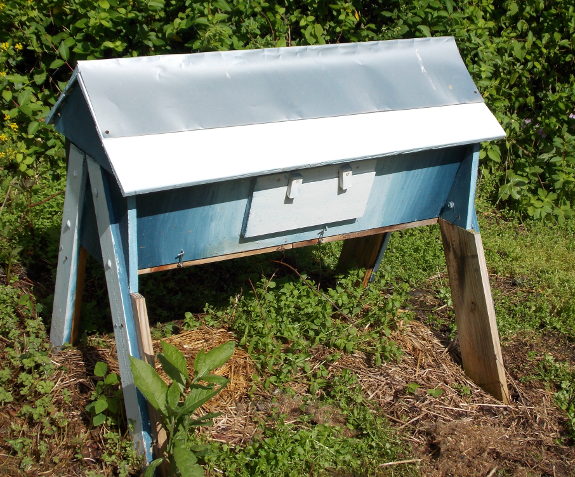
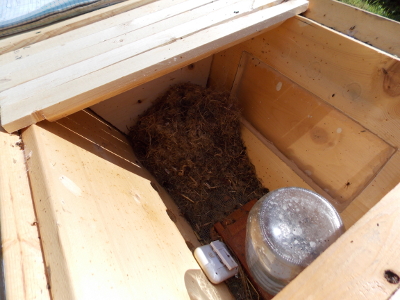 Our top-bar hive has been sitting in the yard
vacant ever since our
package absconded from it this time last year. I've been leery of
giving the structure another try because the Warre hive is working so well, but
reading Swarm
Traps and Bait Hives
suggested another possible use for the top-bar hive --- catching swarms.
Our top-bar hive has been sitting in the yard
vacant ever since our
package absconded from it this time last year. I've been leery of
giving the structure another try because the Warre hive is working so well, but
reading Swarm
Traps and Bait Hives
suggested another possible use for the top-bar hive --- catching swarms.
The first step in the
top-bar-to-swarm-hive conversion involved looking inside and cleaning
the hive up. In the process, I discovered that our top-bar hive
wasn't entirely vacant 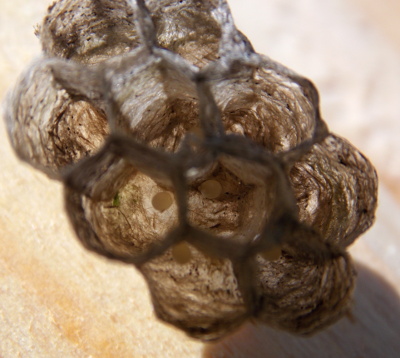 after all. An ant
colony was living in one corner, a wasp had laid eggs in a new paper
nest, and what appeared to be a mouse nest covered most of the hive's
bottom. Once I pulled out the "mouse nest," though, I discovered
that it was actually a bird nest, perhaps from the miniscule Blue-gray
Gnatcatchers that make such a racket around the edges of our yard in
the spring. There were no eggs present in the bird nest, so I
figured it was okay to make the birds find a new home, and I had no
qualms about doing the same for the wasp. (I left the ants alone
since it seems like bees and ants can coexist.)
after all. An ant
colony was living in one corner, a wasp had laid eggs in a new paper
nest, and what appeared to be a mouse nest covered most of the hive's
bottom. Once I pulled out the "mouse nest," though, I discovered
that it was actually a bird nest, perhaps from the miniscule Blue-gray
Gnatcatchers that make such a racket around the edges of our yard in
the spring. There were no eggs present in the bird nest, so I
figured it was okay to make the birds find a new home, and I had no
qualms about doing the same for the wasp. (I left the ants alone
since it seems like bees and ants can coexist.)
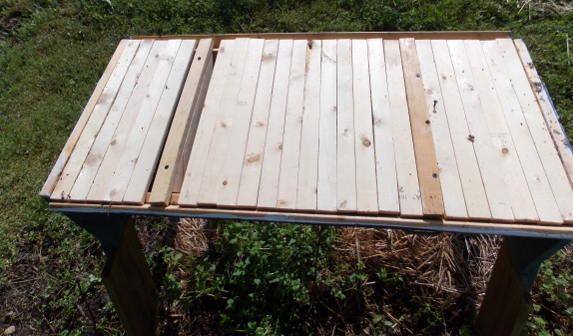
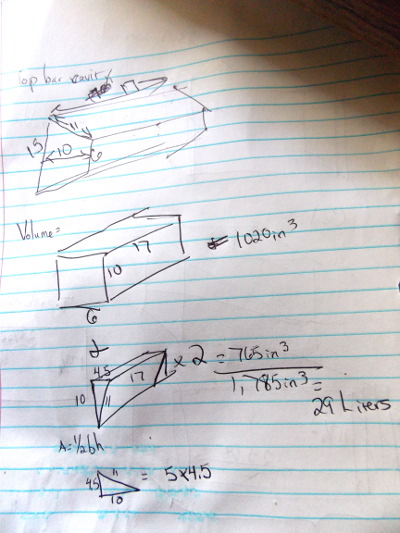 Next, I considered the cavity
size of the top-bar hive. The instructions I'd read last year
recommended moving the follower boards in so that only twelve top bars
were included in the bees' initial living area. However, my
calculations suggest that leaves a cavity volume of only 29 liters,
while 40 liters is the optimal size bees look for when choosing a new
home. So I moved the follower boards to the ends of the hive and
doubled the interior space.
Next, I considered the cavity
size of the top-bar hive. The instructions I'd read last year
recommended moving the follower boards in so that only twelve top bars
were included in the bees' initial living area. However, my
calculations suggest that leaves a cavity volume of only 29 liters,
while 40 liters is the optimal size bees look for when choosing a new
home. So I moved the follower boards to the ends of the hive and
doubled the interior space.
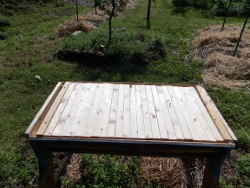
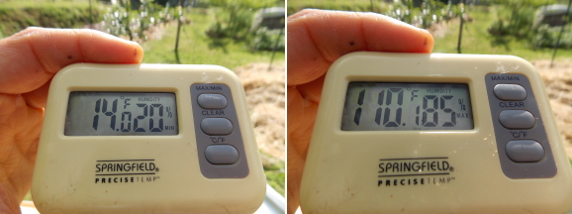
One hypothesis about why
our bees absconded last year was that the hive was getting too hot in
the sun, so Mark put in a max-min thermometer to see what temperatures
the colony would have been dealing with. Swarm
Traps and Bait Hives recommends locating these
structures in full shade for best chances of catching bees, and more
shade does seem to be merited since the top-bar hive reached 110
Fahrenheit last year. We may move the structure elsewhere now
that it's been reinvisioned as a swarm trap.
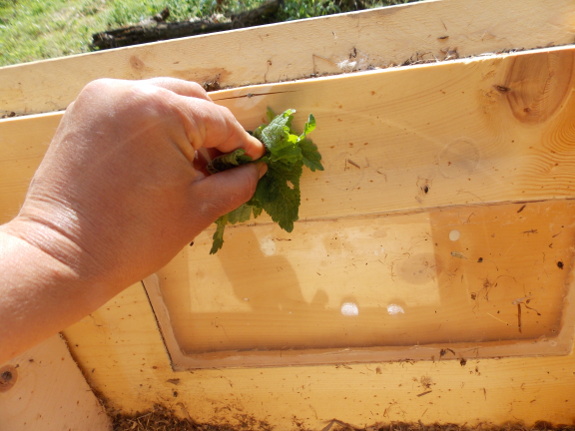
Finally, I smeared some
lemon balm around the inside of the top-bar hive. My lemongrass
oil hasn't arrive in the mail yet, but my gut says lemon balm will work
just as well as a swarm attracter. We'll just have to wait and
see.
Want more in-depth information? Browse through our books.
Or explore more posts by date or by subject.
About us: Anna Hess and Mark Hamilton spent over a decade living self-sufficiently in the mountains of Virginia before moving north to start over from scratch in the foothills of Ohio. They've experimented with permaculture, no-till gardening, trailersteading, home-based microbusinesses and much more, writing about their adventures in both blogs and books.
Want to be notified when new comments are posted on this page? Click on the RSS button after you add a comment to subscribe to the comment feed, or simply check the box beside "email replies to me" while writing your comment.
- Remove comment
- Remove comment
